Analysis of the image generated in the optical system of a refracting telescope (convergent-divergent lens)
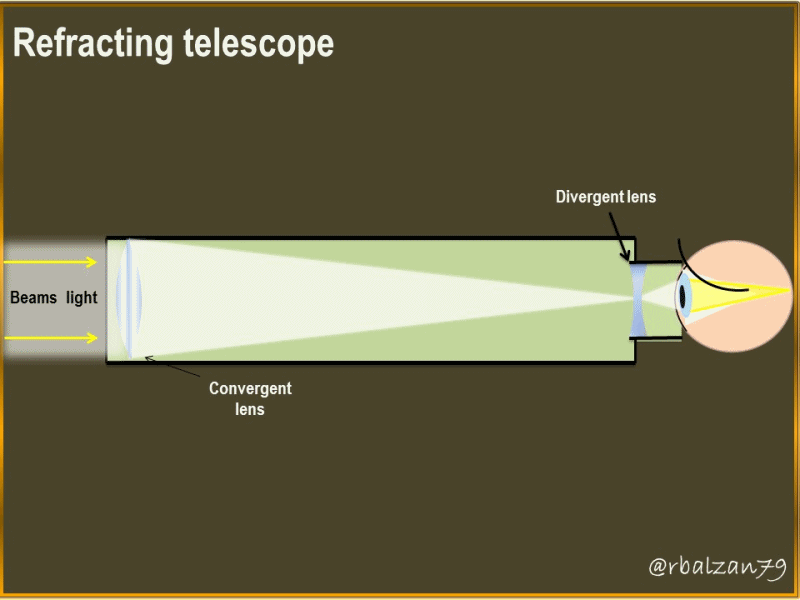
1.- Analysis and calculations of variables in the generation of images in a convergent lens.
2.- Calculations of variables in image generation in a diverging lens.
Once we have dealt with these two thin lenses of convergent and divergent type, now, it is necessary to analyze the behavior of the luminous rays passing through an optical system in series composed by a convergent and a divergent lens as you have been able to observe in the gif at the beginning of this publication, This gif is inspired in the optical structuring of a refracting telescope (because it is composed by lenses), whose optical structure is constituted by a convergent lens as objective and a divergent lens in the eyepiece of this optical instrument (refracting telescope), this can be better observed in the following figure 1.

With the previous figure 1, we will start our analysis and, of course, in the structuring of our exercise and, in addition, it is important to take into account the following figure 2, where you can see the behavior of the light rays in both lenses:
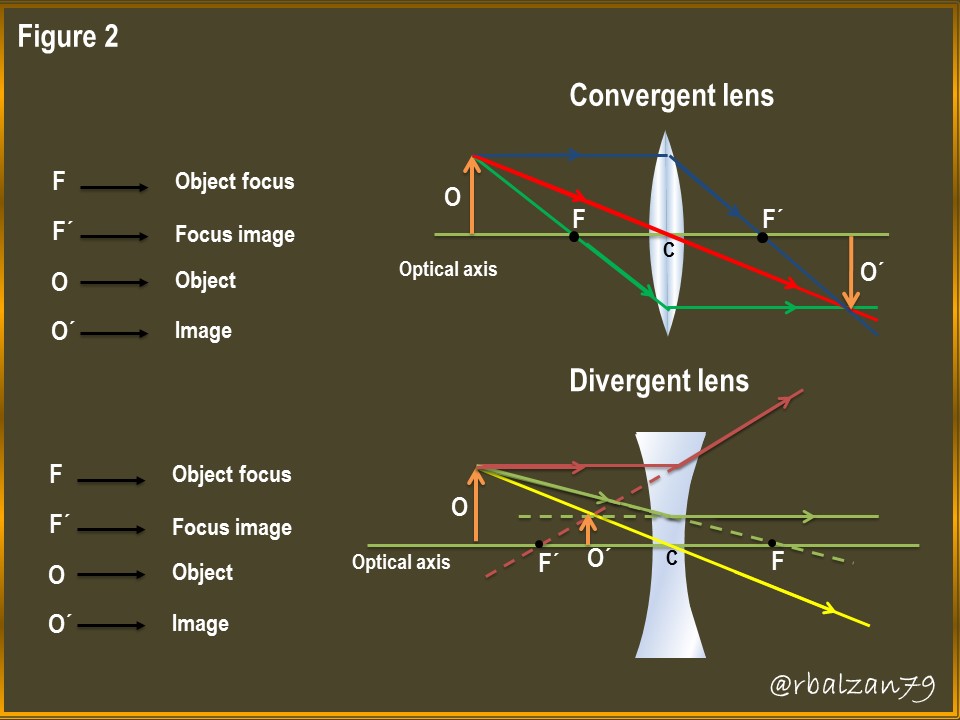
Exercise
In order to analyze the behavior of light rays in the optical system of a refracting telescope, a person observes an object whose height (Y) is 15 cm, and the object-objective lens distance is 40 cm (X), where the image is projected at a distance of 32 cm from the transmission side of the light rays refracted by the converging lens.
Then the image generated in the converging lens is observed by a diverging lens, the height of the object will now be that of Y'1, which originated at a distance of 28 cm from the diverging lens (X2), the distance (X'2) of the image generated by the diverging lens is 10 cm.
In relation to the above, answer to the following questions:
a.- What will be the size of the image generated by the converging lens?
b.- What will be the size of the image generated by the diverging lens, therefore, this will be the final size of the object?
Solución
Data for convergent lens:
Y = 15 cm (Object height).
X = 40 cm (Object distance).
X´= 32 cm (Distance of the image with respect to the converging lens).
Y´= ? (Image height).
Data for diverging lens:
Y´1 = (Size obtained from the image generated by the converging lens).
X2 = 28 cm (Object distance).
X´2= - 10 cm (Distance of the image with respect to the diverging lens, negative because it is formed on the incidence side of the light rays).
Y´= ? (Image height).
As you can see, we are focusing on the calculation of the size of the images generated by both convergent and divergent lenses and all this can be visualized in the following figure 3.
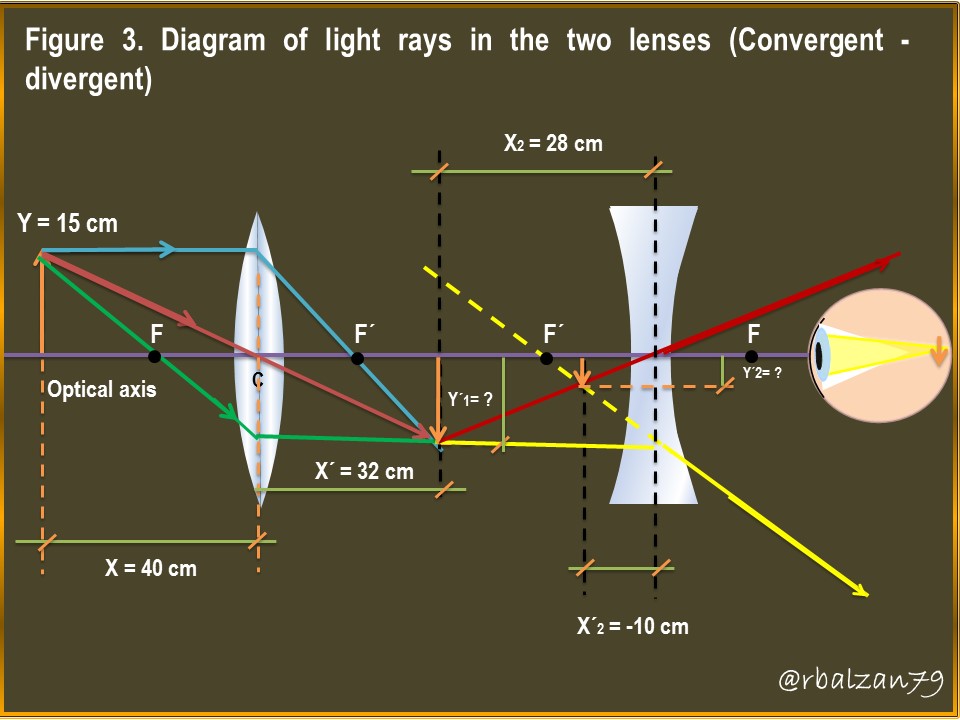
With this scheme of light rays in both the converging and diverging lens we will begin to answer our first question, related to the size of the image generated by the converging lens.
a.- In order to calculate the variable indicated above, it is important to note the formulation that we are going to implement:
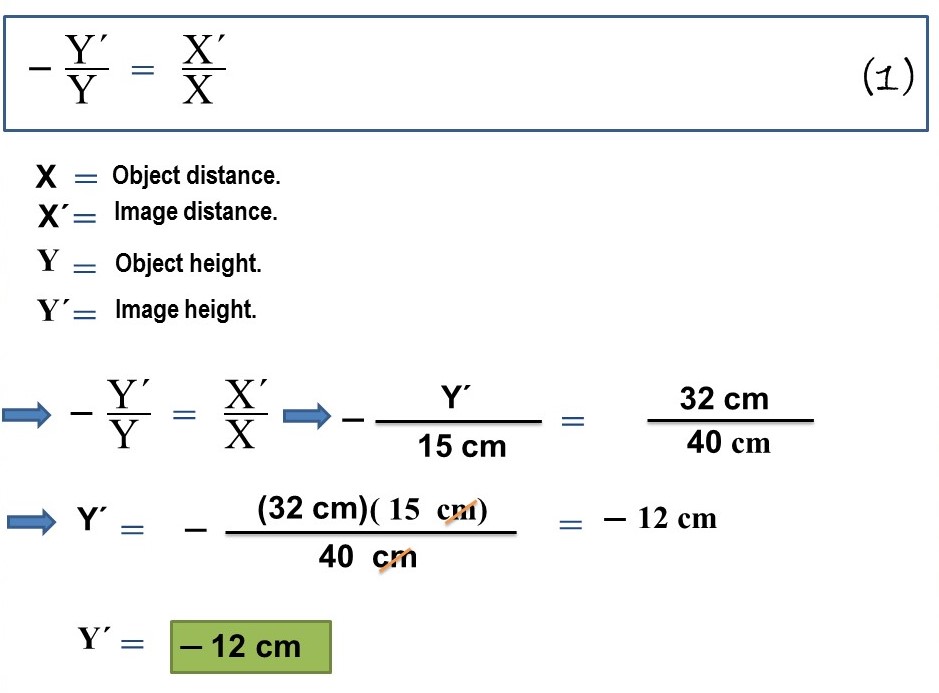
In this way we calculate the height of the image generated by the converging lens, now in the same way we do for the diverging lens, where, the size of the object will be the value obtained for Y', that is, 12 cm, the negative sign indicates that the image is inverted, for the case of the converging lens.
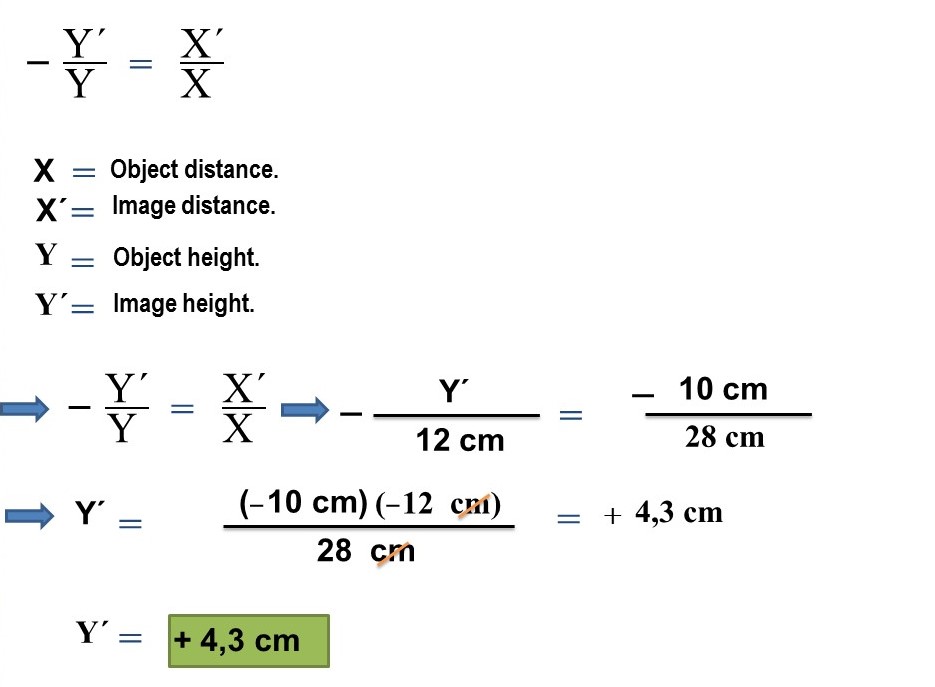
Now we can calculate the size of the image generated by the diverging lens whose value was 4.3 cm, did not change its direction, therefore, remained straight, characteristic of diverging lenses, ie, this type of lens will always form virtual images, straight and more diminished as you could notice.
Conclusion
The phenomenon of light has led us to visualize everything around us, this through our complex natural optical systems such as our eyes, and improve it through the implementation of artificial optical systems such as lenses, in this case, both convergent and divergent placed in the optical instrument as a refracting telescope, because they are made up of lenses.
So far we had analyzed the images generated in these lenses separately, but this time we found that it is possible to use them in series in order to improve the usefulness of a particular optical instrument such as the above, this time, we linked with the calculation of the size of each of the images generated in a convergent lens as divergent and what could we observe?
By means of the light ray diagram we notice how in the convergent lens the image generated was real and inverted, because it was formed next to the transmission of the light rays, all this was also possible because the object was at a greater distance than the focal length (object focus), otherwise it would have been virtual and not inverted, also projected on the incidence side of the light rays.
As for the image generated by the diverging lens, it complied with the characteristics of this type of optical system, i.e., it formed a virtual image, right (not inverted) and smaller in size, since the image generated by the diverging lens was 4.3 cm, i.e., taking the 12 cm with which the image reaches the diverging lens, its reduction was 2.79 times smaller and 5.4 cm smaller than the size of the object analyzed, which was 15 cm (Y).
Until another opportunity my dear friends.
Note: The images were created by the author using Power Point and Paint, the animated gif using PhotoScape.
Recommended bibliographic references
[1] GEOMETRIC OPTICS. Link.
[2] Lens Basics. Link.
[3] Building a Telescope. Link.
Thanks for your contribution to the STEMsocial community. Feel free to join us on discord to get to know the rest of us!
Please consider delegating to the @stemsocial account (85% of the curation rewards are returned).
You may also include @stemsocial as a beneficiary of the rewards of this post to get a stronger support.
Thank you for the valuable support dear @stemsocial community.